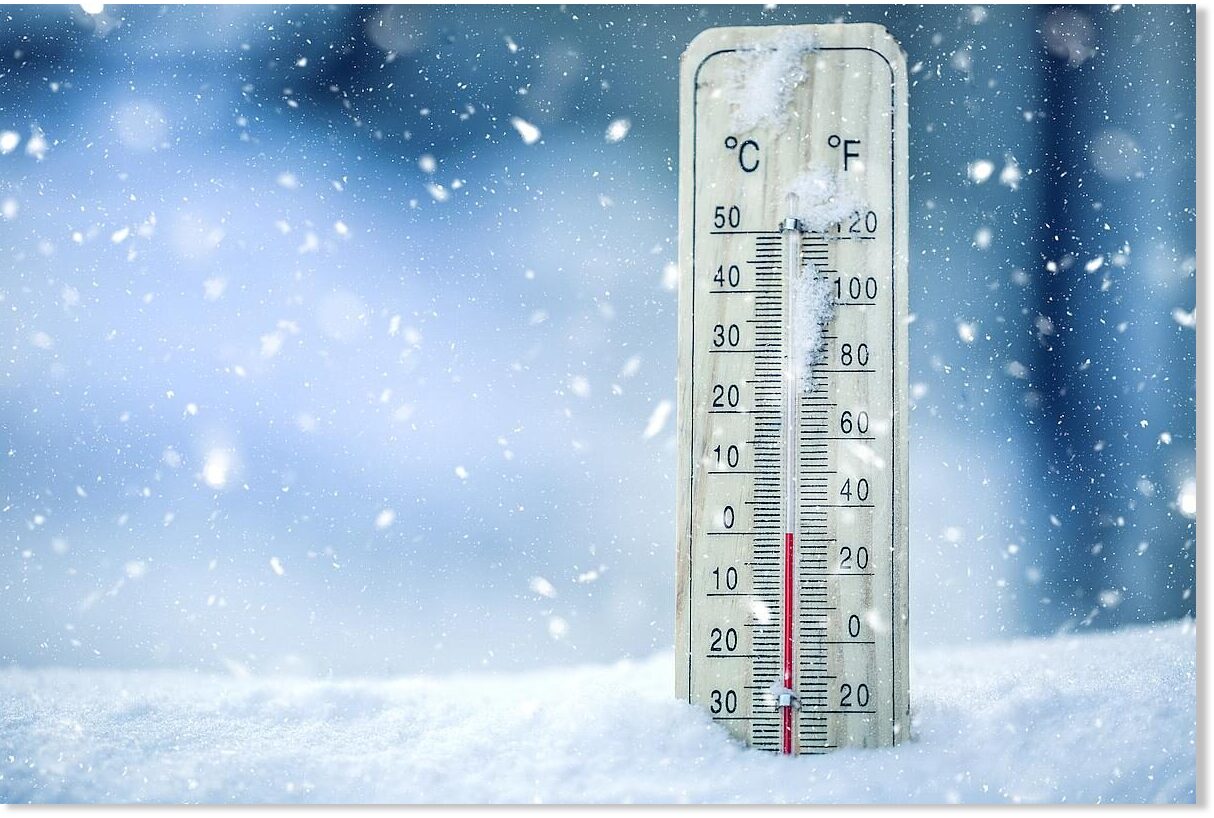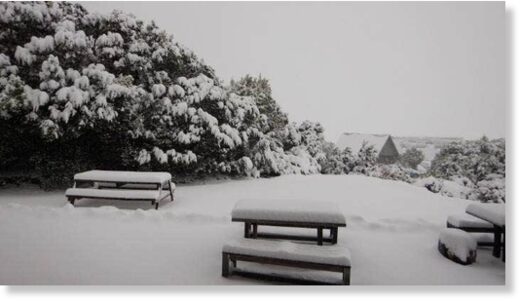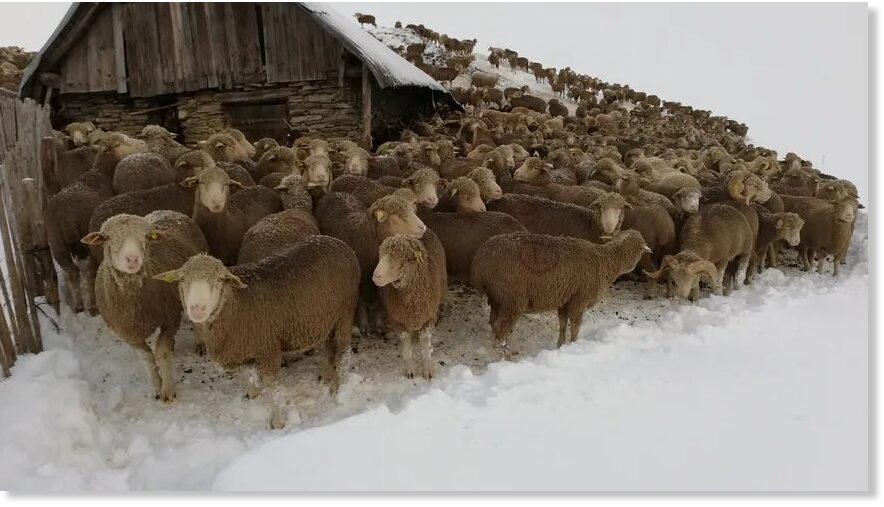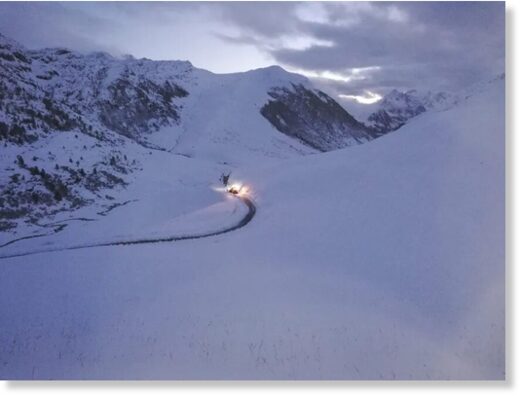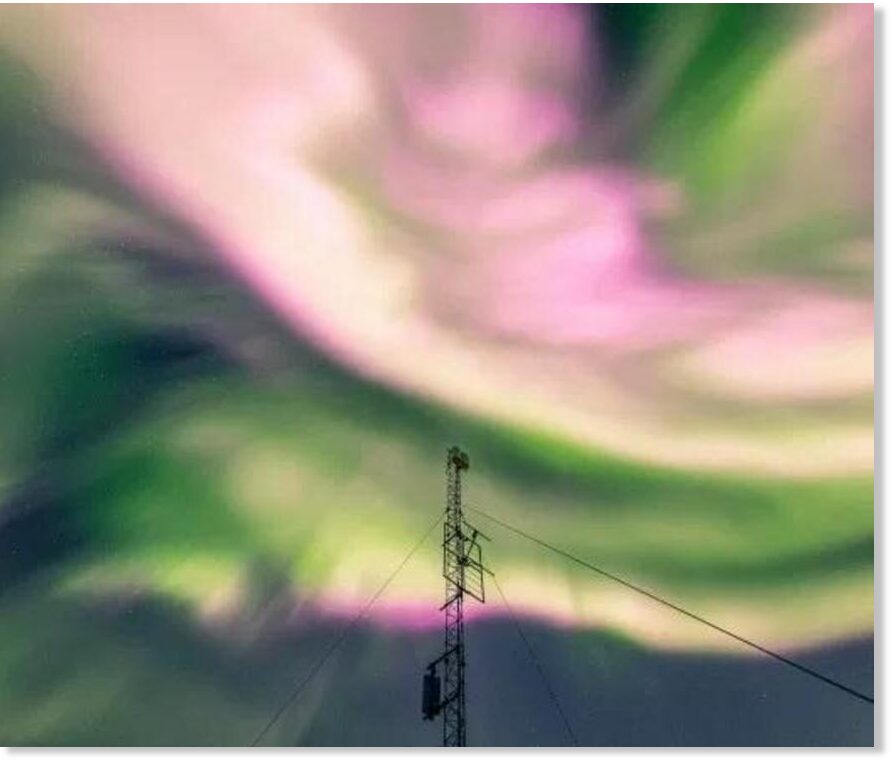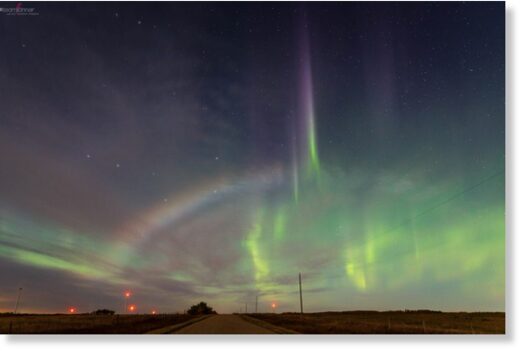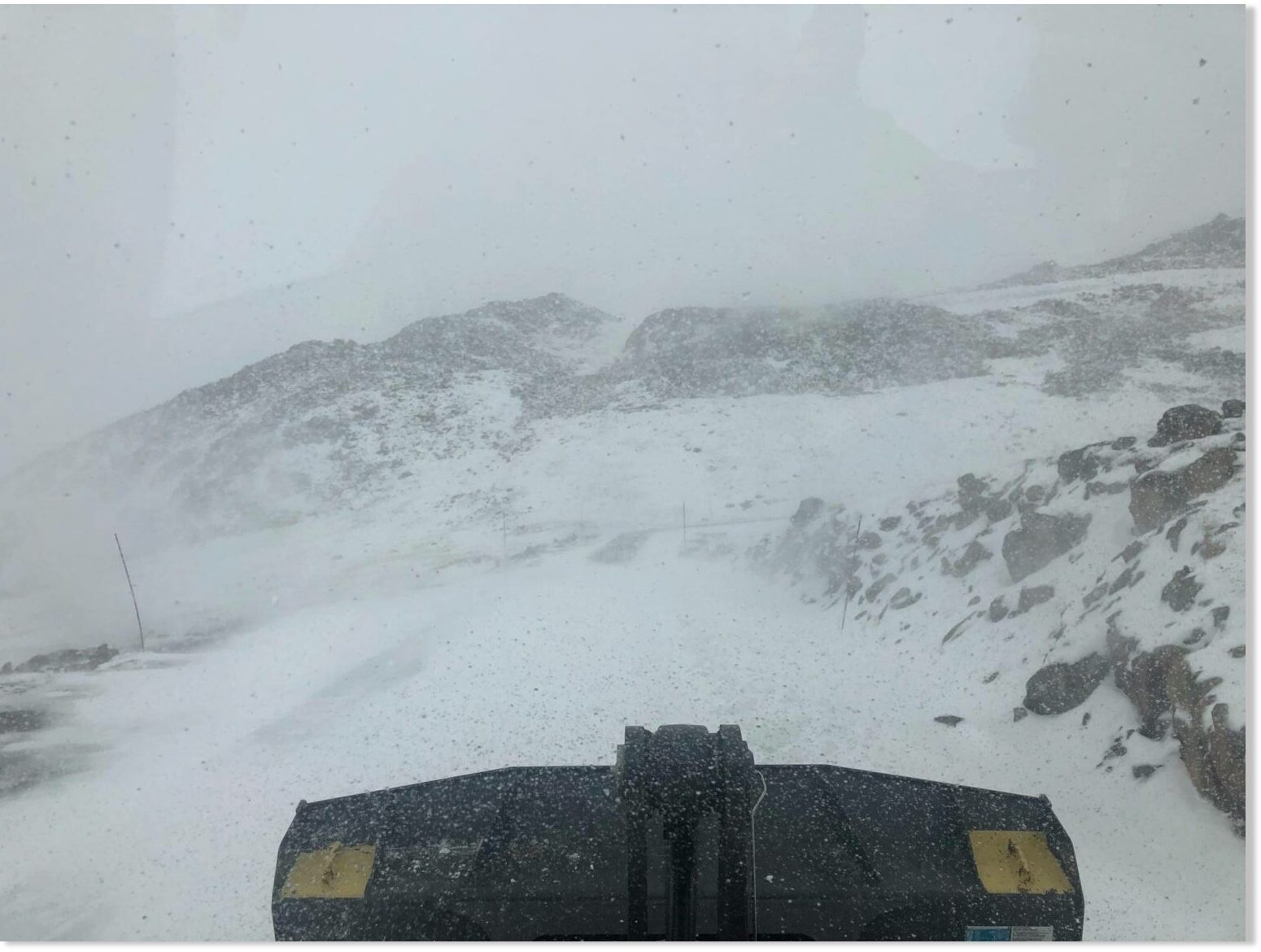The largest-ever study of tree rings from Norilsk in the Russian Arctic has shown that the direct and indirect effects of industrial pollution in the region and beyond are far worse than previously thought. An international team of researchers,...

www.sott.net
Arctic dimming causing 'devastating' forest decline
Sarah Collins, University of Cambridge
Phys.org
Fri, 25 Sep 2020 10:11 UTC
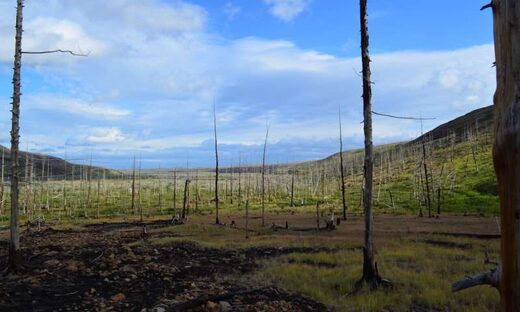
© Dr Alexander Kirdyanov
Widescale pollution has caused devastating forest decline east of Norilsk, Russia.
Widescale pollution has caused devastating forest decline east of Norilsk, Russia. Credit: Dr Alexander Kirdyanov
The largest-ever study of tree rings from Norilsk in the Russian Arctic has shown that the direct and indirect effects of industrial pollution in the region and beyond are far worse than previously thought.
An international team of researchers, led by the University of Cambridge, has combined ring width and wood chemistry measurements from living and dead trees with soil characteristics and computer modeling to show that the damage done by decades of nickel and
copper mining has not only devastated local environments, but also affected the global carbon cycle.
The extent of damage done to the
boreal forest, the largest land biome on Earth, can be seen in
the annual growth rings of trees near Norilsk where die off has spread up to 100 kilometers. The results are reported in the journal
Ecology Letters.
Norilsk, in northern Siberia, is the world's northernmost city with more than 100,000 people, and one of the most polluted places on Earth. Since the 1930s, intensive mining of the area's massive nickel, copper and palladium deposits, combined with few
environmental regulations, has led to severe pollution levels. A massive oil spill in May 2020 has added to the extreme level of environmental damage in the area.
Not only are the high level of airborne emissions from the Norilsk industrial complex responsible for the direct destruction of around 24,000 square kilometers of boreal forest since the 1960s, surviving trees across much of the high-northern latitudes are suffering as well. The high pollution levels cause declining tree growth, which in turn have an effect of the amount of carbon that can be sequestered in the boreal forest.
However, while the link between pollution and forest health is well-known, it has not been able to explain the 'divergence problem' in dendrochronology, or the study of tree rings:
a decoupling of tree ring width from rising air temperatures seen since the 1970s.
Comment: This is an admission that their man-made global warming predictions - yet
again - do not reflect the
actual reality on our planet.
Using the largest-ever dataset of tree rings from both living and
dead trees to reconstruct the history and intensity of Norilsk's forest dieback, the researchers have shown how the amount of pollution spewed into the atmosphere by mines and smelters is at least partially responsible for the phenomenon of 'Arctic dimming', providing new evidence to explain the divergence problem.
Comment: So the study admits that there are other factors that are also responsible and it's not solely - likely not even primarily - manmade pollution.
"Using the information stored in thousands of tree rings, we can see the effects of Norilsk's uncontrolled environmental disaster
over the past nine decades," said Professor Ulf Büntgen from Cambridge's Department of Geography, who led the research. "While the problem of sulphur emissions and forest dieback has been successfully addressed in much of Europe, for Siberia, we haven't been able to see what the impact has been, largely due to a lack of long-term monitoring data."
The expansion of annually-resolved and absolutely dated tree ring width measurements compiled by the paper's first author Alexander Kirdyanov, along with new high-resolution measurements of wood and soil chemistry, allowed the researchers to quantify the extent of Norilsk's devastating ecosystem damage, which peaked in the 1960s.
"We can see that the trees near Norilsk started to die off massively in the 1960s due to rising pollution levels," said Büntgen. "Since atmospheric pollution in the Arctic accumulates due to large-scale circulation patterns,
we expanded our study far beyond the direct effects of Norilsk's industrial sector and found that trees across the high-northern latitudes are suffering as well."
The researchers used a process-based forward model of boreal tree growth, with and without surface irradiance forcing as a proxy for pollutants, to show that
Arctic dimming since the 1970s has substantially reduced tree growth.
Arctic dimming is a phenomenon caused by increased particulates in the Earth's atmosphere, whether from pollution, dust or volcanic eruptions. The phenomenon partially blocks out sunlight, slowing the process of evaporation and interfering with the hydrological cycle.
Comment: Bear the above in mind when reading the book extract below. It's also worth noting that it was only in the last few weeks that a paper was published noting that the effect of volcanic dust on the climate has been vastly underestimated:
Volcanic ash may have a bigger impact on the climate than we thought
Global warming should be expected to increase the rate of boreal tree growth, but the researchers found that as the pollution levels peaked, the rate of tree growth in northern Siberia slowed. They found that the
pollution levels in the atmosphere diminished the trees' ability to turn sunlight into energy through photosynthesis, and so they were not able to grow as quickly or as strong as they would in areas with lower pollution levels.
Comment: To note again, atmospheric 'pollution' can take numerous forms, not just human activity.
"What surprised us is just how widespread the effects of industrial
pollution are — the scale of the damage shows just how vulnerable and sensitive the boreal forest is," said Büntgen. "Given the ecological importance of this biome, the
pollution levels across the high-northern latitudes could have an enormous impact on the entire
global carbon cycle."
Comment: It would appear that part of the problem is that these studies are performed with foregone conclusions, and assumptions science knows more than it does; that human activity is the primary cause of changes on our planet, and that we understand the
complexities of plant and soil life better than we really do .
Pierre Lescaudron explicates the more likely drivers of global dimming - some that are not factored into the models mentioned above - and their effect
globally - not just in the Arctic - in his book with Laura Knight-Jadczyk
Earth Changes and the Human-Cosmic Connection:
Global dimming
Global dimming is the reduction in the amount of solar radiation received on Earth's surface during fair weather.
One of the main causes of global dimming is atmospheric dust. Numerous scientists have demonstrated that a global dimming trend has been in
process for decades.
There's been some debate as to whether atmospheric dust induces a net warming effect on the planet (because it absorbs more than it reflects radiation), or whether it induces a net cooling effect (because it reflects more than it absorbs radiation). In 2008, atmospheric scientist Richard Hansell tested and measured the net effect of atmospheric dust particles on temperatures and concluded that
although atmospheric dust both absorbed and reflected solar radiations, it induced an overall cooling effect:
The analysis showed that over half of dust's cooling effect is compensated for by its warming effect. The finding, published in the Journal of Geophysical Research, Atmospheres, could clarify scientists' understanding of how dust influences moisture fluctuations in the atmosphere and surface temperatures around the planet.
As shown in the diagram below, researchers from
the Institute of Soil, Water and Environmental Sciences found a significant reduction, globally averaged 2.7% per decade, in solar radiation reaching the Earth's surface over the last 50 years.
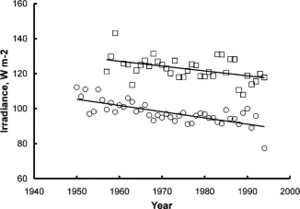
© Stanhill & Cohen
Reduction in solar irradiance over the period 1950-2000.
In the 90's an inversion occurred and our planet experienced a global brightening in some regions. Then, after the year 2000, global dimming restarted in certain areas and became overall more chaotic with different continents experiencing opposite trends.
Now, according to mainstream science, global dimming is man-made, caused by the accumulation of aerosol particles in the atmosphere due to industrialization. The trend inversion noticed in the 90s is attributed to the ban of several types of aerosols and other anti-pollution measures. However, a paper published in 2005 showed that over the period 1986-2000, although a slight dimming was occurring over land, a brightening occurred over the oceans.

© Pinker et al
Irradiance over the period 1982-2002. Land measurements on the left (global dimming), ocean measurements on the right (global brightening).
If human activity was indeed the cause of global dimming, and the reduction in human aerosol use the cause for the brightening observed in the 1990s, a brightening over land should have been observed and, possibly, a delayed brightening over the oceans (due to air circulation), since most industrial sources are located on continents. But the paper referenced here shows exactly the opposite.
Since 2000, dimming has been observed in numerous places, including China, India and the whole southern hemisphere, despite the relatively lower presence of anthropogenic pollution in this less industrialized hemisphere. We can deduce from this that while human pollution might indeed affect the amount of sunlight reaching the surface, it's obviously not the only cause and its effects are probably negligible in the larger context.
Unlike human pollution, cometary activity could, at least partly, explain both the global dimming observed above the oceans during the 1990s and the dimming since 2000.
Between 40 and 400 tons of extraterrestrial material is estimated to enter the Earth's atmosphere daily 214,215 most of it arriving in the form of cometary dust. These estimates calculated years ago do not, however, take into account the recent surge in cometary activity.
If we factor in the 655% increase in confirmed fireballs (see AMS statistics above) over the past eight years, the quantity of cometary dust entering Earth's atmosphere should be at least six times higher than that generally estimated; that is, daily incoming dust measuring between 260 and 2,600 tons.
He later goes onto to explicate how a rise in cosmic rays accelerates cloud formation, global dimming and global cooling, and that, while this appears to be a more recent phenomenon, with an
increase of 13% in just 3 years, their impact on further cooling the planet will also likely have an affect on tree growth in the Arctic, a factor also not accounted for in the study above.
See also:
And check out SOTT radio's:

